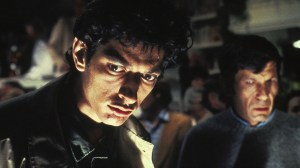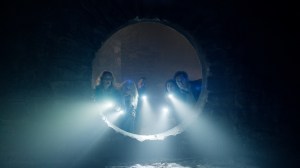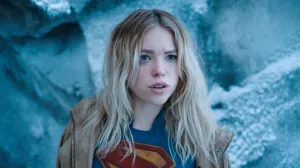
Artist Alex Ross is a true icon of the comic book industry, with his painted art style defining big moments in both Marvel and DC Comics history going back nearly three decades. In order to create such powerful iconography in his art, Ross has had to gain a rare level of insight and understanding of the characters in both the DC and Marvel universes, and is therefore the rare figure who can discuss the differences between the two without starting a total flame-war.
Videos by ComicBook.com
In recent interview with EW, Ross happened to address the topic, directly, breaking down what he feels is the biggest difference between Marvel and DC characters:
“There’s certainly an argument to make for similarity of iconic status, but what’s always separated the two for me is Marvel’s material has always had a kinetic quality to it, particularly based on the design aesthetics of Steve Ditko and Jack Kirby. DC characters are not defined by a singular artistic voice influencing all the rest, but that’s what happened with Jack Kirby’s leadership of the entire Marvel brand. Everything is affected by what he led the charge of. That 10 years where he created the majority of those characters in the ’60s, that’s what every artist and writer has built their process upon, including the movies today. There’s a kinetic energy and a chaotic energy that embodies Marvel’s stuff.”
That’s certainly a rare point that don’t hear in very many fans discussions: Marvel is indeed the brainchild of a few creative minds (Stan Lee, Steve Ditko, Jack Kirby), while DC was pulled together from earlier comic strips and serials that had a wide range of creative influences, and were therefore not defined by any one style or voice. Of course, in the time since, DC has seen some major creative voices re-define its characters (John Byrne, Frank Miller, Alan Moore), but a lot of the reason those creators became so famous is because they did something revolutionary and/or boundary-breaking with their respective characters.
As Ross further explains, DC’s wider range of creative influences and styles doesn’t takeaway from the fact that its characters are the actually some of the original frameworks for the superhero genre as a whole – whereas Marvel is in some ways a rebellion against that archetype:
“DC is the foremost component of where the DNA of what makes a superhero came from. They did the very first superhero in Superman, and the first great embodiment of the dark superhero in Batman, and of course the first female superhero in Wonder Woman. All those key things are lined up by them, and they go in a nice descending ladder of importance with their Justice League. With Marvel it’s clear that Spider-Man is not the same kind of hero as Superman; Cap has similarities but he has differences as well and has been used in very interesting ways that stop him from being a clone of any DC counterpart. The Marvel characters are all over the place in terms of what makes them unique, and there’s a hip energy that’s been instilled in them since their creation. Every other superhero company follows the mold of having their heroes follow those archetypes that DC embodies, but Marvel broke away.”
Marvel has indeed been known for its kitschy and (in artist terms) “kinetic” style, whereas DC is known for its more mythic and almost religious reverence of the superhero archetype. That same stylistic divergence has clearly influenced the cinematic side of things, as DC is defined by more “high art” visions like The Dark Knight Trilogy or the Zack Snyder Trilogy, while Marvel Studios has built itself around quirky and kitschy adventures like Iron Man, Guardians of the Galaxy and Thor. Clearly one formula has been more lucrative than the other when it comes to delivering fun movie experiences to audiences, leaving DC with a major roadblock that only Wonder Woman has been able to scale.
Marvel Studios’ Black Panther is now playing in theaters. Avengers: Infinity War hits theaters on April 27, 2018. It is followed by Ant-Man and The Wasp on July 6, 2018, Captain Marvel on March 8, 2019, Avengers 4 on May 3, 2019, the sequel to Spider-Man: Homecoming on July 5, 2019, and Guardians of the Galaxy Vol. 3 in 2020.
The theatrical cut of Justice League is now out on home video. The film will be followed in the DC Extended Universe by Aquaman on December 21st, Shazam on April 5, 2019, Wonder Woman 2 on November 1, 2019, Cyborg in 2020, and Green Lantern Corps in 2020.








